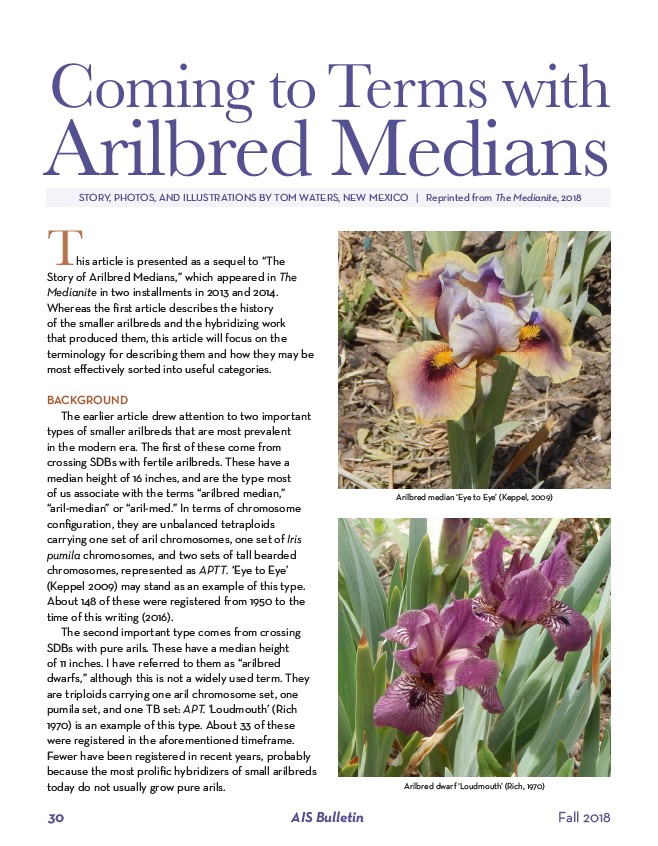
Coming to Terms with
Arilbred Medians
STORY, PHOTOS, AND ILLUSTRATIONS BY TOM WATERS, NEW MEXICO | Reprinted from The Medianite, 2018
This article is presented as a sequel to “The
Story of Arilbred Medians,” which appeared in The
Medianite in two installments in 2013 and 2014.
Whereas the first article describes the history
of the smaller arilbreds and the hybridizing work
that produced them, this article will focus on the
terminology for describing them and how they may be
most effectively sorted into useful categories.
BACKGROUND
The earlier article drew attention to two important
types of smaller arilbreds that are most prevalent
in the modern era. The first of these come from
crossing SDBs with fertile arilbreds. These have a
median height of 16 inches, and are the type most
of us associate with the terms “arilbred median,”
“aril-median” or “aril-med.” In terms of chromosome
configuration, they are unbalanced tetraploids
carrying one set of aril chromosomes, one set of Iris
pumila chromosomes, and two sets of tall bearded
chromosomes, represented as APTT. ‘Eye to Eye’
(Keppel 2009) may stand as an example of this type.
About 148 of these were registered from 1950 to the
time of this writing (2016).
The second important type comes from crossing
SDBs with pure arils. These have a median height
of 11 inches. I have referred to them as “arilbred
dwarfs,” although this is not a widely used term. They
are triploids carrying one aril chromosome set, one
pumila set, and one TB set: APT. ‘Loudmouth’ (Rich
1970) is an example of this type. About 33 of these
were registered in the aforementioned timeframe.
Fewer have been registered in recent years, probably
because the most prolific hybridizers of small arilbreds
today do not usually grow pure arils.
Arilbred median ‘Eye to Eye’ (Keppel, 2009)
Arilbred dwarf ‘Loudmouth’ (Rich, 1970)
30 AIS Bulletin Fall 2018